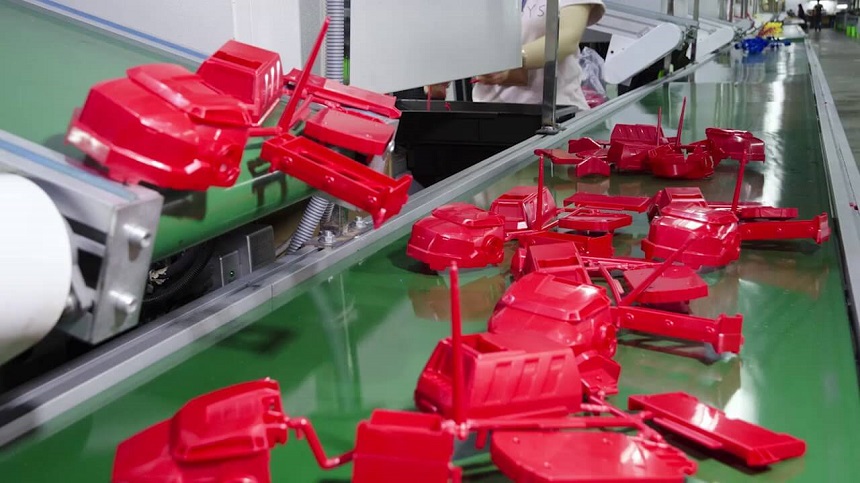What Are The Different Types of Plastic for Injection Molding?

The plastic injection molding process is an expensive one. However, the cost may vary depending on what type of plastic is being used.
1. Polyoxymethylene POM
Polyoxymethylene (POM) is a thermoplastic material that is semi-crystalline in nature. It is often used in injection molding processes. POM has a high tensile strength and is also very tough. In addition to its strong tensile and flexural strengths, POM has good dimensional stability and excellent creep resistance.
POM is often used in automotive parts and automotive fuel systems. Its low coefficient of friction makes it ideal for gears and bearings. It is also commonly applied to valves and other automotive parts.
POM is a relatively easy material to machine. However, it is heat sensitive, so you should always be careful with its use. Besides, POM is susceptible to acid hydrolysis. For this reason, it should be stored in a dry environment.
Injection molded POM is often used in consumer electronics and automotive industries. The resin is often classified into two types: homopolymer formaldehyde and co-polymer formaldehyde.
2. Polypropylene (PP)
Polypropylene (PP) is used in a variety of consumer products, including toys, storage containers, flexible packaging, and flexible food packaging. However, PP has poor bonding properties and high flammability. It is also difficult to paint and has low density.
One of the most important features of PP plastic is its melting point. Also, it should never be above 180 Megapascal in pressure. To ensure optimal performance, PP moldings should be manufactured in a controlled temperature environment.
A common method for modifying polymer materials is cellular injection molding. This process reduces the weight of moldings and eliminates sink marks. Several studies have investigated the influence of secondary crystallization on mechanical properties of PP. In this study, however, we aimed to quantify the influence of porous structure on the dimensional accuracy of PP moldings.
3. Polystyrene (PS)
Polystyrene (PS) is one of the most common types of medical plastics used. It has many properties that make it a good choice for medical applications. In addition to its chemical resistance, PS also has a high level of clarity and rigidity.
Thermoplastic polymers such as PS are commonly found in plastic injection molding processes. They are inexpensive, versatile, and have an excellent dimensional stability. Nevertheless, there are some disadvantages to using this type of material. PS is not biodegradable, and the monomer dissolves quickly when it comes into contact with chlorinated solvents. Additionally, PS has low chemical and heat stability. It is not suitable for outdoor use, as it is prone to stress cracking and erosion.
As an alternative, you can consider using an engineering plastic such as polypropylene. Although this plastic is relatively low cost, it is not as dimensionally stable as PS.

4. Thermoplastic Elastomer (TPE)
Thermoplastic elastomers are a special group of plastics. They do not melt. They are often preferred over silicone. They offer a variety of elastic behaviors, such as flexibility and elasticity, and can be processed in a range of ways. Injection molding is the most common method of processing TPEs.
There are several different types of TPEs. Some are biocompatible and are used in medical devices. Others are food-safe. These materials are also suitable for use in automotive parts and devices.
Thermoplastic elastomers can be made in different chemical compositions. They can be used to make products that are lightweight, such as sports shoes. This type of material is known to be recyclable.
Processing methods for TPEs include injection, extrusion, and compression. These methods can be used to shape a wide variety of profiles. A few of the most commonly used applications are foams, tubes, and finished parts.
5. Thermoplastic Polyurethane TPU
When choosing a plastic for injection molding, it is important to choose the right material. This can have a significant impact on the final cost of the finished part. There are many different kinds of plastics available, and each has its advantages. For example, thermoplastic polyurethane (TPU) is used for automotive interior parts, power tools, sporting goods, medical devices, and even pet products.
TPU has high elasticity and abrasion resistance. It can also be molded into shapes. Besides being a great performer, TPU is easy to process and can be recycled.
However, TPU is prone to problems when it is molded. In addition, it can degrade over time at high temperatures. So it is best to use TPU with a metal insert in the mold.
The Bottom Line
There are several different types of plastics that can be used in the injection molding process. Some of these are Polyoxymethylene (POM), Polypropylene (PP), Polystyrene (PS), and Thermoplastic Polyurethane (TPU). Knowing which of these materials to use in the injection molding process will ensure that you have a product that will be successful. If you want to get the best plastic injection molding done, contact PTMS NOW!
